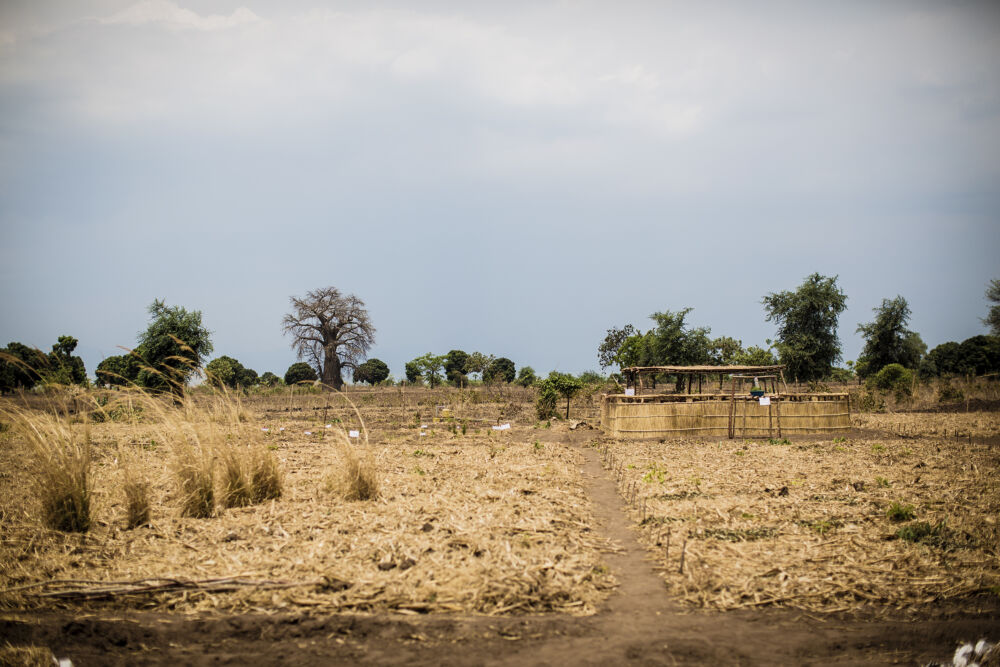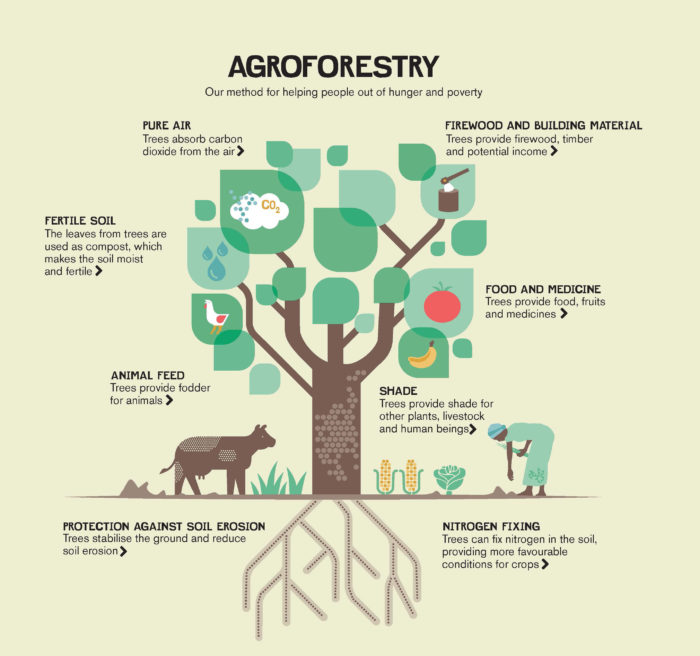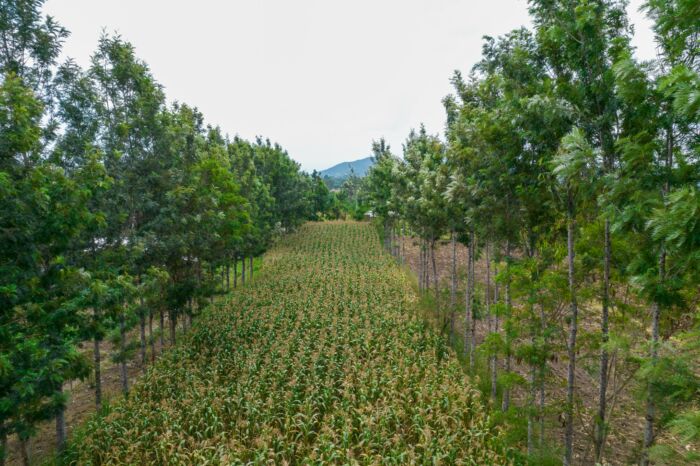Agroforestry: the proverbial cornerstone in climate action
Date
November 2, 2021
Some of the most important actions are the simplest of all but require everyone to do their part. One way of doing this would be through the intensification of agroforestry. Agroforestry involves the deliberate growing of woody perennials (trees, shrubs) alongside other crops and livestock in the same land. (IPCC, 2019) acknowledges the mitigation-adaptation synergy that agroforestry has in the agriculture sector. This requires proper planning and use of appropriate species for different locations to maximise the synergies. Agroforestry offers many solutions including climate change mitigation through carbon sequestration and providing conducive conditions for species that can resist certain stress and shocks. Agroforestry contributes to climate change adaptation, by providing diverse sources of livelihoods, income generation, food, and nutrition security. It also offers less labor-intensive employment opportunities. It contributes to biodiversity conservation, through supporting increased variety of species, germplasms and improved ecological integrity. Having trees on farms helps to reduce pressure on conserved forests while improving soil quality, controlling soil erosion and increasing soil carbon.

Need for agroforestry policy framework
Despite its potential, agroforestry has not received the necessary attention in terms of legislation and policy framework. Most countries are still grappling with many challenges such as unsecure land and tree tenure, intensified monocropping, and heavy use of synthetic fertilizers and herbicides that limit the uptake and expansion of agroforestry activities. Unattractive market conditions for agroforestry goods and services remain a barrier for many smallholder farmers. Complex mechanisms and low investment in capacity development limit the possibility of smallholder farmers and indigenous peoples participating in payment for ecosystem services schemes for their role in climate change mitigation both at national and global spheres.
Agroforestry cuts across different established sectors such as land, water, environment, energy, agriculture, and forestry making it hard to anchor it to a specific sector mostly due to the other competing and emerging priorities hence agroforestry agenda and priorities falls through the cracks. It is urgent for governments to be intentional in creating ways for mainstreaming agroforestry in their economies. There is a need for a clear and holistic policy process, comprehensive strategies, and action plans to guide the implementation of agroforestry including research and extension services to transform agroforestry into a viable strategy for climate change mitigation, adaptation, and poverty reduction. It is necessary to ensure that farmers have access to quality and diverse planting materials to support biodiversity conservation and well-established tree value chains, market linkages, and development of agroforestry-based industries for wider offtake of the agroforestry products. Agroforestry policies are necessary to address the issue of sharing of benefits that have been accrued from sustainable land management, tree tenure especially where governments have trees as part of state property extending forest protection to private land and applying levies on tree harvesting. Existing laws that discourage agroforestry adoption and expansion should carefully be reviewed to incentivize more people to take up tree growing as part of the on-farm enterprise.

Vi Agroforestry, therefore, calls out COP26 to prioritise agroforestry policies to guide widespread adoption of agroforestry nationally, regionally and globally. “During COP26, We want to see solution focus and holistic thinking. Measures to increase resilience to the effects of climate change, which at the same time benefits biodiversity and strengthens people living in poverty. Major investments in climate work at the intersection of agriculture, poverty reduction and gender equality are needed to increase climate justice and secure everyone’s right to food. ” Eva Åberg Vi Agroforestry Director.